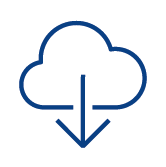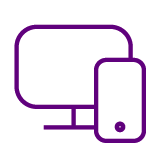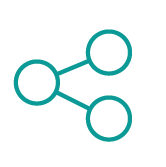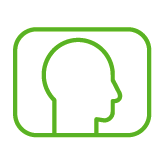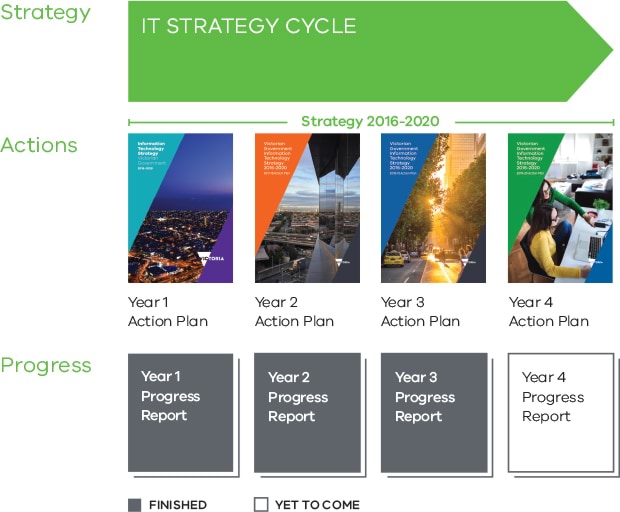- Date:
- 13 Dec 2019
Message from the Special Minister of State
This government is working to build for the future and make the lives of Victorians easier. In 2016, I launched the Victorian Government Information Technology Strategy 2016-2020 (IT Strategy) that set out the enabling IT components to make that happen.
Back then we embarked on a journey that recognised the value of data and information sharing, and the opportunities presented by the digital revolution. We focused on public sector reform, and identified the capability uplift necessary for government to operate effectively in the twenty-first century. We also endeavoured to put the community at the centre of everything we do, to deliver services that are targeted, easy to access, and that simplify the lives of Victorians.
This approach put in place strong foundations including:
- implementation of core digital infrastructure such as the whole-of-government Application Programming Interface gateway, Engage Victoria and Single Digital Presence
- the establishment of a cyber security unit, and a robust cyber security framework and strategy
- investment in government staff capability and modernising ways of working across the Victorian Public Service
- delivery of key digital agencies, including Service Victoria and the Victorian Centre for Data Insights
In this final action plan of the IT Strategy, we will continue to build upon these foundations and focus on changing the ways in which the Victorian Government works to deliver better services to citizens. Through continuing to upskill employees and further enhancing technologies, we will enable greater collaboration and information sharing across government, with businesses and with the Victorian public.
Engagement with our community remains a critical focus for this year’s action plan. We will continue to enhance our digital presence through focusing on the continuous improvement of user-friendly digital services and seek innovative ways to resolve issues.
Our IT transformation journey does not end here. As the rate of change in technology increases, the expectations on government rise. We recognise the importance of continuing to build government capability for the modern age that supports the design and delivery of good policy, good services and good outcomes for Victorians.
As we finalise the actions for the IT Strategy, we begin to consider how we will maintain our commitment to a more strategic, open and transparent government, and evolve this in the development and establishment of the next Victorian Government 2020+ Digital Strategy.
Gavin Jennings
Special Minister of State
Our approach
Our approach includes focus on information, and data reform, digital opportunity, technology reform and capability uplift.
Vision
- Better information
- Easier engagement
- Contemporary technology
- Capable people
Context
The IT Strategy was published in 2016 and included the year one action plan. New action plans are published annually, and progress is publicly reported at vic.gov.au/information-technology-strategy. This 2019-20 action plan provides the fourth year of actions in the ongoing delivery of the IT Strategy.
Focus on priority areas
Information and data reform
We want data and information to be available in a way that helps us make good decisions.
That means information comes from trusted sources, is accessible and provides evidence-based insights. Information should be consistent, easy to use, secure and integrated.
Digital opportunity
We want information and services that Victorians can easily access using any device at any time.
We want online processes for the public and government that are secure, will let us become more efficient and responsive, and that are respectful of citizens’ time.
Technology reform
We want the technology systems we use to be contemporary, secure, foster collaboration and enable data sharing.
Standard corporate systems across government reduce cost, improve productivity and streamline collaboration.
Capability uplift
We want government employees to understand the value of technology and be capable in procuring contemporary systems.
That means a strategic understanding of technology procurement, better project management, an improved understanding of cyber security, and clearer governance.
Visit vic.gov.au/information-technology-strategy for the full Victorian Government IT Strategy 2016-2020, along with progress reports and further information.
Delivery principles
These principles underpin the government’s approach to technology delivery.
Digital (default)
Digital is the default and first channel consideration for government services.
Co-designed and citizen-centric
Victorians are actively encouraged to participate in the design of citizen-centric digital services, which will be provided with end users in mind.
Capability fostered
Government employees will develop capabilities to utilise market-based information technology services to enable business objectives.
Open, shared, secure and managed information and data
- default position is open and published (explicit exceptions)
- managed as a shared and valued resource, decoupled from systems structures
- uses standard global formats (decoupled from software products, allowing interoperation)
- ‘single source of truth’ for personal data, transparent and open to correction
- kept securely; available as needed – stored properly, described, and available to search
Enhanced business systems
For new and refreshed business systems, a modern approach to delivery will be undertaken. The order of consideration will be reuse, cloud, buy, then build.
Mobile
Presentation of government services will be designed and available from the perspective of mobile delivery of services and information.
Strengthened procurement
Systems procurement will take a broader government view in respect of major corporate systems, promote partnership with major suppliers, promote competition, and prefer open systems and data.
Employee choice and flexibility
Employees should be given choice of approved devices and personal productivity and collaboration tools and should be able to easily work remotely from an office to serve citizens where they are.
Robust ICT program governance
Responsible governance and management structures will be in place throughout the life of a project to provide confidence in decision-making and outcomes that meet stakeholder needs.
Standard corporate systems
Systems that provide basic corporate functionality, (such as identity, document management, briefing, finance, human resources management and procurement) will be shared, standardised and consolidated.
Information and data reform
We want data and information to be available in a way that helps us make good decisions.
Why is this important?
The Victorian Government is striving to improve how we manage, share and use the broad types of data we collect to drive business value and significantly improve the services we deliver to citizens. Improved information sharing across government and with the community create opportunities to collaborate and tackle complex issues through meaningful co-design of tailored solutions and services.
The Victorian Government recognises data as an asset and promotes an Open Data philosophy. Open Data has numerous benefits including greater efficiency and quality in the delivery of public services and improved transparency and accountability. Open Data breaks down traditional information silos, enables more timely access to greater, richer and more consistent data, and creates opportunities to collaborate. Improved accessibility to quality data results in better informed decision making and the design of services and solutions that are tailored to the specific need.
With improved sharing and access to information, there is a greater need to appropriately store and protect data in a way that maintains accessibility and usability. Appropriate management of data includes adopting a holistic approach that streamlines processes for storing, updating and using data. Streamlined processes result in greater accuracy and consistency in accessing and distributing information.
The information and data reform priority supports our second priority area, digital opportunity, by ensuring that citizens are presented with more accurate and complete information when engaging with the government, improving their interaction and promoting further engagement.
Key focus for 2019-20
The first three years of this strategy have laid the foundations for the appropriate management and access to information through the implementation of digital infrastructure, and the development of frameworks and standards across the Victorian Government.
The focus of 2018-19 explored and delivered on innovative information sharing reforms including the launch of the centralised whole of Victorian Government Application Programming Interface Gateway and developer portal, allowing application developers to connect with government data and making these platforms available as a shared service for government departments and agencies.
This year we will continue to focus on changing the ways in which government employees work to ensure that the collection, management and use of information and data is appropriate and ethical. The design of new systems, standards and processes will consider how regulatory compliance and governance can be incorporated into design, as well as streamlined to alleviate the burden on employees, to ensure that ways of using data are consistent, clear and well communicated.
Case study: Victorian Centre for Data Insights service model
The Victorian Centre for Data Insights (VCDI) was established to improve how the government manages, shares and uses the data it collects to improve the services we deliver to Victorians. VCDI drives the Data Reform Strategy for the Victorian Public Service (Strategy). The Strategy sets the direction for a Victorian public service to make better decisions underpinned by data. It acknowledges the ways that data and analytics can be used to improve policy, accurately model future programs and save significant time and money.
To ensure the strategic vision translates into meaningful impact, VCDI offers a full suite of services to help government departments and agencies make better use of data.
Bringing together and analysing data helps to identify meaningful trends and patterns that can be used to inform the delivery of better policies and services for the benefit of all Victorians. Embedding data insights into an organisation is as much about change management as it is about maths and algorithms. That is why – to complement its analytics services – VCDI also supports departments to overcome technical process and cultural barriers.
For example, VCDI is working with several departments and agencies to implement their respective organisational data strategies. This involves defining business challenges that data and analytics can help address and designing and implementing a roadmap to address the issues.
VCDI’s business transformation and capability specialists work within departments to help them become more data-driven. This could mean overcoming specific process and technology challenges, coaching teams in new ways of working, or developing tailored learning and development programs.
VCDI also leads the development of integrated Data Hubs, which will unlock the potential of cross-departmental data insights. The Hubs will enable government to be more attuned and responsive to citizens’ needs – especially when it comes to the most vulnerable Victorians.
VCDI is keen to learn even more about the challenges that government employees face as government plans for the next iteration of the Strategy through 2019.
To find out how VCDI can assist you, or to share your thoughts on the future of Victoria’s data agenda, please contact data.insights@dpc.vic.gov.au
Case study: Whole of Victorian Government Application Programming Interface Capability
The Victorian Government is creating an environment that supports information and data sharing in a secure and fast way, improving the accessibility and quality of data used to inform decisions, boost productivity and deliver services.
Application Programming Interfaces (APIs) are a critical component of delivering the digital technologies that Victorians use every day. The Victorian Government now provides leading API capabilities and infrastructure that lay the foundations for an ‘API first’ approach to data sharing across the Victorian Public Service.
A dedicated API team provide Victorian Government agencies with a suite of API related support services, from technical advice through to full API development, hosting and support in a 24/7 managed environment. The API Gateway technology supports agencies to securely share, re-use and enhance data in real-time, and allows API publishers to make their APIs discoverable to consumers both within and external to government.
A key component of the API capability is Victoria’s public facing developer portal – available at developer.vic.gov.au. This website allows developers from government, trusted partners and the public to access secure spaces to:
- view and try out an expanding catalogue of APIs
- request access to specific APIs
- integrate the APIs into applications
To support the ‘API first’ approach, Victoria has released API design standards in collaboration with government Chief Information Officers, technical experts and the Victorian developer community. The standards are a living resource that provide developers with recommendations on how to create high quality, consistent and highly reusable APIs.
By adopting an ‘API first’ approach, the Victorian Government has set a positive example of how APIs help to share data, unlock data held in legacy systems, increase reach, save time and money and empower citizens and external developers to create new and exciting government applications and enhanced government services.
2016-2020 IT Strategy journey

Developed an Information Management Framework
2016-17
Introduced legislation to reform the FOI Act 1982
2016-17
Established a data agency to better use and share data (VCDI)
2016-17

Identified 12 master data sets and designed cross-sharing
2016-17
Established Data Analytics Technology Platform for VCDI
2017-18
Developed and implemented standards for information management and data exchange
2017-18

Developed API platform into a shared service available for use by all 8 departments and VicPol
2017-18
Embedded a ‘data discovery’ capability for VPS personnel
2018-19
Implemented next steps of the Information Sharing and Release Strategy & Data Exchange Framework
2018-19

Launched a WOVG developer portal – over 250 registered developers
2019-20

21 delivered action items
2019-20
Develop Compliance by Design guidelines
2019-20
Develop a consistent model to enshrine ethical data science for Vic Gov
2019-20

Actions to be delivered
Digital opportunity
Why is this important?
With the increase in connected, digital devices in the hands of citizens there is a growing expectation that these devices can be used to interact with government at any time including outside of business hours.
In response to the expectations and needs of citizens, the Victorian Government aims to provide timely access to information and services 24/7 through a range of internet enabled devices. We aim to provide easy and convenient access to information and we are taking a ‘Digital first’ approach to ensure that systems and services are appropriately designed and provides the ability for a wider range of Victorians to engage with government on their terms.
Digital collaboration with a greater number of stakeholders, including citizens, government and businesses, leads to greater insights and the creation of policies and services that are designed with users at the centre. The shift to digital services will make government more accessible to citizens while lowering the cost of service delivery. It will also support information and data reform by allowing citizens to update their information when convenient to them.
Key focus for 2019-20
There has been significant progress in digital opportunity over the last three years of the IT Strategy. The evolution of online service delivery through Service Victoria and Single Digital Presence, as well as the consultation and collaboration platform Engage Victoria, have significantly changed the ways in which the Victorian public interacts with government.
In 2018-19, a key highlight was the development of a technology architecture vision across all the systems involved in the delivery of family safety services. A model for how to respond and plan for other cross-sector initiatives is currently being developed leveraging this work.
In the final year of this strategy, the focus will be on continuing to enhance government’s digital presence and improving citizen engagement. This will include prototyping solutions in targeted areas of digital disruption and digital opportunity to identify innovative ways to deliver more accessible and effective government services.
With the increase in the government’s digital presence, it is also necessary that we take steps to evolve digital standards and online tools. These will support the creation and continuous improvement of user-friendly digital services for citizens.
On-the-ground changes will continue to be seen and experienced by Victorians, and the ease by which they can interact and transact with the government will continue to improve.
Case study: Implementation of myLearners application
As our lives become increasingly busy, and our time more valuable, government services need to be flexible, convenient and easier to use. VicRoads has launched an innovative digital log book application to help young drivers to progressively organise driving sessions that match their experience.
The myLearners application replaces the paper-based log book that learner drivers use to record the 120 hours of driving that are required before sitting for a licence. The myLearners application is accessible by learners and their supervisors, with a myVicRoads account, from both iOS and Android devices. Learners can invite multiple supervisors via the application, which then enables supervisors to view and approve driving hours.
The myLearners application is supported by a new myLearners website that provides top tips for lifelong safe driving behaviours and prompts learners and their supervisors with road safety and safe driving information relevant to the stage of the learner driver’s experience.
The myLearners application gives learners the tools they need to be able to:
- log and track their hours on the application, no matter where they are
- keep track of progress as they work towards solo driving
- seek help and information to form lifelong safe driving behaviours
Learners who already have a paper log book have the option to transfer their hours to the myLearners application. Once the hours have been transferred, learners can continue to use just the application moving forward.
Since its launch in December 2018, the application has already been used by over 40,000 learners.
The application also provides an opportunity to collect data that will be used as input in to the development of future road safety policies.
To find out more about the myLearners app, please visit the website at: www.vicroads.vic.gov.au/licences/your-ls/mylearners
Case study: Police Assistance Line and Online Report (BlueConnect)
Victoria Police successfully launched the Police Assistance Line (PAL) and Online Reporting (OLR) services as part of a broader digital transformation initiative known as ‘BlueConnect’. The initiative aims to modernise Victoria Police and keep police members connected, agile and responsive to the evolving nature of crime and community expectations.
The PAL and OLR services provide two additional channels for the community to seek advice and report non-urgent crime events and lodge general police enquiries. These new channels are available 24/7 and can be accessed from any location using a phone or internet enabled device, providing greater convenience for citizens.
The introduction of the PAL and OLR will have a widespread impact:
- for Victoria Police it means a modern policing service with improved efficiencies in front line policing
- for Victoria Police members it means having more time to focus on local priorities and high-value policing
- for the community it means an easy and convenient way to engage with Victoria Police, plus improved efficiencies in how their information is managed
- for Victoria Police partners like the Emergency Services Telecommunications Authority and CrimeStoppers it means they can focus on their core services knowing that PAL and OLR is servicing public needs for non-urgent crime
A public-facing 12-month advertising campaign, “When you need us, but not the sirens” was simultaneously launched across traditional and digital media channels to actively promote the new reporting platforms to all Victorians.
To find out more about these services, please visit www.police.vic.gov.au/palolr
2016-2020 IT Strategy journey
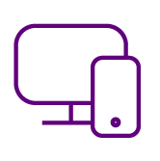
Citizen-facing API Gateway successfully piloted with VicRoads
2016-17
Core technology platform delivered to launch Service Victoria
2016-17

Launched the Engage Victoria platform – 75 consultations now underway
2016-17
Roll-out of Office 365 commenced
2017-18
Digital First Strategy developed
2017-18

Service Victoria successfully launched with 10 improved services available
2017-18
Implemented the Identity and Access Management Governance Model
2018-19
Commenced development of WOVG IT vision and Strategic Roadmap for family safety technologies
2018-19

7 additional services added to Service Victoria
2018-19

16 delivered action itms
2019-20
Extend Family Safety Enterprise Architecture to represent intersectional characteristics
2019-20
Increase and improve the Vic Gov digital presence & prototype new digital solutions to government problems
2019-20

5 actions to be delivered
Technology reform
Why is this important?
The Victorian Government is implementing contemporary workplace technologies to increase employee productivity, satisfaction and retention as well as making the government working environment more attractive to job seekers. Retention of skilled and motivated employees improves the government’s productivity and efficiency and reduces expenses associated with high staff turnover.
We must lead by example in the use of modern technology and systems that are fit for purpose, support secure information sharing and promote staff productivity and efficiency rather than hinder it. Government should continue to take advantage of cloud-based systems to enable employees to have flexible, easy access to software and the information necessary to perform their roles, irrespective of where they are and which department, they work in.
Forward planning is required to ensure that planned technology changes remain relevant into the future and can be applied across government to promote greater consistency in processes, integration and connectedness and realise time and cost efficiencies.
Government continues to be open to considering new and emerging technologies that effectively support day to day functions, create greater opportunities to engage with Victorian citizens and ensure that we can protect Victorian’s information against increasing cyber security threats.
Key focus for 2019-20
Victorian Government employees have experienced significant technology reform in the workplace over the last three years. This has occurred through the launch of the Victorian Government Digital Workplace program, the migration of staff to modern workplace tools including Microsoft Office 365.
In 2018-19 we continued to roll-out the Finance and Human Capital Management (HCM) common platforms and added a common procurement solution. In addition, we developed guidelines to assess technology asset risks by supporting disaster recovery and the management of IT obsolescence.
Technology reform is an ongoing commitment, and what we have delivered across the Victorian Public Service has resulted in a more efficient and productive workplace. This year we will explore opportunities for new common solutions that will enhance the way government employees operate.
To increase efficiencies and better enable employees to perform their role, we will continue to plan and evolve technology across Victorian Government departments and agencies.
Case study: Mobile Technology and Intelligence Management (BlueConnect)
Mobile Technology
The Mobile Technology project has successfully deployed 9,490 iPads and iPhones to general duties and Highway Patrol police at the rank of sergeant and below, as well as Protective Services Officers (PSOs). These devices support safer, smarter and faster policing as police officers can access real-time information when out in the field.
The devices have a purpose-built application, ‘IRIS’, that enables police officers to perform location, vehicle, licence and person checks and view information from national databases, wherever they are. More functions and applications will be made available on the devices throughout 2019.
Crime and event reporting provides frontline members with the ability to submit reports while in the field on IRIS rather than waiting to do it when they return to the station.
Mobile devices work in conjunction with body worn cameras, which are currently being deployed across the state to capture audio and video recordings to increase the transparency of interactions between police members and the public, as well as improved evidence capture. The cameras pair with the mobile device through an application called Axon View.
Intelligence Management
The Intelligence Management project is responsible for implementing ‘Neo’, a web-based solution with advanced data analytic capabilities and the ability to search across multiple data sources using one search engine.
Historically, Victoria Police did not have the ability to create intelligence on a single platform. Neo has introduced the capability for members to collate, analyse and use information to generate insights to produce intelligence information and inform operational decision-making.
Neo enables users to access overt records and information from other work areas apart from their own. For example, if an investigator was based at Dandenong, they would only have access to Dandenong’s records. Using Neo, they would have access to records across the state, which will greatly assist in investigating state-wide offending and identifying organised crime networks.
Over 1,000 intelligence practitioners, divisional management team members, investigators and intelligence support officers currently have access to Neo. It is expected an additional 2,000 members will be provisioned over 2019.
Case study: Cenitex Digital Workplace
The Cenitex Digital Workplace program recognises and responds to the need for a more flexible workplace that supports thousands of Victorian public servants, all with different needs and workstyles.
As the nature of the relationship between citizens and government continues to shift with a greater demand for digital service delivery, the Victorian Government workplace has adapted to meet these demands. The introduction of modern tools and technologies supports greater opportunities for collaboration and increased productivity.
Through a single portal, the Cenitex Digital Workplace program offers seamless access to modern applications and cloud services such as Microsoft Office 365, and all lines of business applications that are unique to the individuals’ work. This means employees have access to their required applications, on any device, at any time, from any location.
The Digital Workplace program consists of common digital tools, data and processes that employees use including, including:
- modern devices
- collaboration tools (Slack, Microsoft Teams, Office 365)
- line of business applications
- corporate services (finance, human resources, intranet etc).
- application store
- network and remote access
- office productivity tools
The Digital Workplace program provides seamless access to internal data, securely and from a remote location. Victorian Public Service employees from different departments can now work together in a simple and flexible manner, without limitations.
2016-2020 IT Strategy journey

Cenitex performance management framework approved
2016-17
Changes to Cenitex governance arrangement approved
2016-17

7 statements of direction developed to guide WOVG best-practise approach to common IT capabilities and management
2016-17
Worked with Commonwealth & other states to propose a way forward for cyber-security industry certification
2017-18
Workforce Identity and Access Management Strategy and Framework developed
2017-18

Deployed a geospatially enabled government telecommunication assets register – now has 1.5M assets
2017-18
Cenitex removed single points of failure and introduced modern desktop software
2018-19
Selected, planned and commenced deployment of WOVG ERP Solutions (procurement, finance, HCM)
2018-19
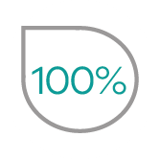
Launched a WOVG digital workspace which is now accessible to 100% of employees
2019-20

32 delivered action items
2019-20
Develop discussion paper to guide adoption of Robotics Process Automation across government
2019-20
Identify and recommend a Workforce IdAM Solution
2019-20

3 actions to be delivered
Capability uplift
Why is this important?
Government is implementing technology changes as part of the IT Strategy to improve IT capability and support a modern workplace. Government employees are also developing better skills to enable the effective use of new and emerging technology, to realise its benefits and to mitigate security risks.
The uplift in IT capability of senior leaders and the broader IT workforce is critical to support evolving project delivery techniques and to ensure empowered decisions are made, which will lead to better outcomes and a more accommodating environment for innovation.
Modern working approaches such as Agile and human-centred design will continue to be utilised and promoted to ensure digital projects can be delivered effectively and government services are customer focused.
Through expert and strategic non-government partnerships we can identify opportunities to better use technology to improve policy design and service delivery and enhance the customer experience.
Key focus for 2019-20
Several successful projects have been delivered over the last three years to upskill government employees. For example, we have successfully built a community of practice for IT project practitioners and administered a range of grants from the Public Sector Innovation Fund. This included undertaking a partnership with Code for Victoria to realise the value of embedding external capability and adopting new ways of working to solve public sector challenges. This collaboration led to the successful delivery of five tools for use by government departments and agencies. These included a Victorian Legal Aid client matching tool for eligibility triaging and Parks Victoria biodiversity atlas.
The focus for this year will be to further develop employees’ digital skills, particularly senior leaders as well as better interdepartmental sharing of expertise and collaboration. This will develop a more joined up and robust approach in harnessing new technology.
Case study: One VPS
One VPS is a whole- of-government initiative to make it easier for VPS staff to support Victorians better.
To achieve this, One VPS is looking to create a seamless public service. It will focus on shared ways of working and strengthening this culture across the areas of people, process and technology.
One VPS builds on and will work with a range of initiatives to unify government in the delivery of outcomes to Victorians, such as Service Victoria and the Single Digital Presence.
Why is One VPS needed?
The needs of Victorians are not restricted to a single department or agency. One VPS will help bring whole-of-government initiatives together and build the capability and capacity across the VPS to work together to deliver better outcomes for the Victorian community.
For example, One VPS is working across the public service to support and facilitate the delivery of a unified Human Capital Management (HCM) system for the VPS, as well as integrated projects such as common HR processes. The delivery of this project will provide a range of benefits such as the ability for staff to easily move between departments and to easily create agile cross-department teams to support the community.
What will One VPS focus on?
One VPS will:
- facilitate the delivery of VPS-wide policies, values and behaviours, as well as consistency in how they are applied
- deliver a seamless and professional back office, utilising shared technology, centres of excellence and common processes to work efficiently with external partners and support our staff to drive public impact
- support a connected, capable and high-performing workforce by building a culture that attracts and retains the best
- foster and promote initiatives that drive a unified approach to the needs of Victorian communities
Case study: Cyber security awareness and training
The Victorian Government is focused on uplifting capabilities of government employees to implement IT solutions that are innovative, contemporary and beneficial. The capability uplift project for cyber security focuses on delivering an awareness communication and engagement program to boost the cyber resilience of Victorian Government organisations.
The Victorian Government Chief Information Security Officer (CISO) has partnered with the Australian Institute of Company Directors and other leading organisations to boost cyber awareness across the public sector through a range of training programs for senior leaders.
The Victorian Government CISO also partnered with federal cyber security agency, AusCERT, to deliver training to more than 40 of Victoria’s critical infrastructure and essential service providers to strengthen their cyber incident management capabilities. The training enabled organisations to be more confident and capable of responding to cyber-attacks.
In addition, the first whole-of-government awareness campaign was delivered in 2018 as a package of videos, posters, fliers, screensavers, intranet articles to encourage the promotion and use of assets by all government employees. The campaign was designed to target three personas: VPS, IT specialists and senior leaders, with a focus on raising awareness about the most common cyber risks and solutions to increase online safety. The package of assets was distributed across government departments.
Following the campaign, 86% of surveyed participants recalled a recent campaign about cyber security and 80% reported an increased knowledge of cyber risks affecting government.
For the financial year 2019- 2020, we are developing a more integrated approach that will be supported by ongoing activity throughout the year.
2016-2020 IT Strategy journey

Initial upskilling plan for ICT capability completed
2016-17
Undertook PSI Fund project with Code for Australia – developed 3 capability building tools
2016-17
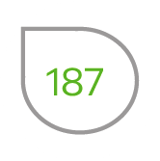
Implemented IT Dashboard – now includes 187 projects
2016-17
Implemented recommendations arising from review of how government procures IT
2017-18
Developed a data analytics capability framework for the VPS
2017-18
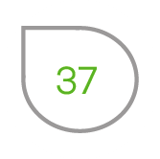
IT Capability Uplift Plan with 37 capability priority areas endorsed by CIOs and ICRS
2017-18
Provided guidance for governance of WOVG enterprise systems
2018-19
Built a community of practice for IT project practitioners
2018-19

Commenced implementation of top 6 priorities in the Capability Uplift Plan
2019-20

13 delivered action items
2019-20
Establish mechanism to be more effective in sharing experiences in transitioning to new technology
2019-20
Investigate opportunities for a WOVG initiative to upskill executives in digital literacy, leadership & innovation
2019-20

3 actions to be delivered
Actions
Actions from the Information Technology Strategy: 2019-20 Action Plan.
| Actions | Due | |
|---|---|---|
| 1. Information and data reform | Develop and launch version 2 of the Data Reform Strategy for the Victorian Public Service. | November 2019 |
| 2. Information and data reform | Develop a consistent model to enshrine ethical data science for Victorian Government. | November 2019 |
| 3. Information and data reform | Develop a Compliance by Design guideline to provide support incorporating information compliance and governance into the design of new processes and systems for the Victorian Government. | February 2020 |
| 4. Information and data reform | Review and make recommendations to improve how data is collected, managed and used as part of legislative and regulatory performance reporting. | December 2019 |
| 5. Digital opportunity | Extend the Family Safety Strategic Architecture to represent personas with intersectional characteristics and update the Strategic Roadmap. | June 2020 |
| 6. Digital opportunity | Develop an operating model to increase use of Single Digital Presence (SDP) across the Victorian Public Service and progress work to develop voice interface technology requirements. | June 2020 |
| 7. Digital opportunity | Develop additional Victorian Government digital standards and online tools that will support the creation of best-practice and user-friendly digital services. | June 2020 |
| 8. Digital opportunity | Improve the oversight and standards within Application stores and code repositories to enable a unified Victorian Government Application presence. | February 2020 |
| 9. Digital opportunity | Prototype solutions in targeted areas of digital disruption and digital opportunity to identify innovative ways to solve government problems. | June 2020 |
| 10. Technology reform | Develop a research paper to guide the adoption of Robotics Process Automation (RPA) across the Victorian Government. | June 2020 |
| 11. Technology reform | Identify and recommend a Workforce Identity and Access Management solution. | March 2020 |
| 12. Technology reform | Identify a candidate for a WOVG enterprise solution and develop a Statement of Direction. | December 2019 |
| 13. Capability uplift | Commence year two of the ICT Capability Uplift Plan and continue implementation of the top six priorities. | June 2020 |
| 14. Capability uplift | Establish a mechanism to allow departments to share experiences and learnings to improve the overall expertise, increase the efficiency and reduce risks associated with transitioning to new common platforms. | June 2020 |
| 15. Capability uplift | Investigate opportunities for a WOVG initiative to upskilleExecutives in digital literacy, leadership and innovation. | June 2020 |
For information about last year’s performance go to our website: www.vic.gov.au/information-technology-strategy
We are committed to a more connected and customer-focused Government for Victorians
The last four years have been an important and successful part of the Victorian Government’s digital transformation journey. During this time, we have made significant changes to the ways we work and how we engage citizens to meet the increasing demand for a more efficient VPS and more accessible government services.
To continue this journey, the focus for the Victorian Government Digital Strategy 2020+ will be to understand how we use technology to contribute to a high performing public service and improve the overall service experience of Victorians. Our goals will include:
- ensure a high-performing public service by digitally enabling the workforce
- support Victorian citizens’ experience through ‘life events’ by a delivering a seamless digital experience
- become more data-driven to improve the way government works, innovates and delivers services
- create sustainable public value through ongoing digital transformation
To achieve these goals, we will focus on the needs of citizens to better understand the technology changes required to deliver seamless and customised government services of the future. We will listen to Victorians and engage with the community in co-designing government’s digital solutions. We will also look to other jurisdictions, locally and globally, to learn how learn how sustainable public value is best achieved.
Through our future direction we will examine effective ways to build suitable operating and delivery models to support our ongoing digital transformation, allowing us to successfully enhance the use of common platforms. We will develop measurable metrics and robust monitoring tools, which will inform our strategic whole-of-government digital investment decisions.
